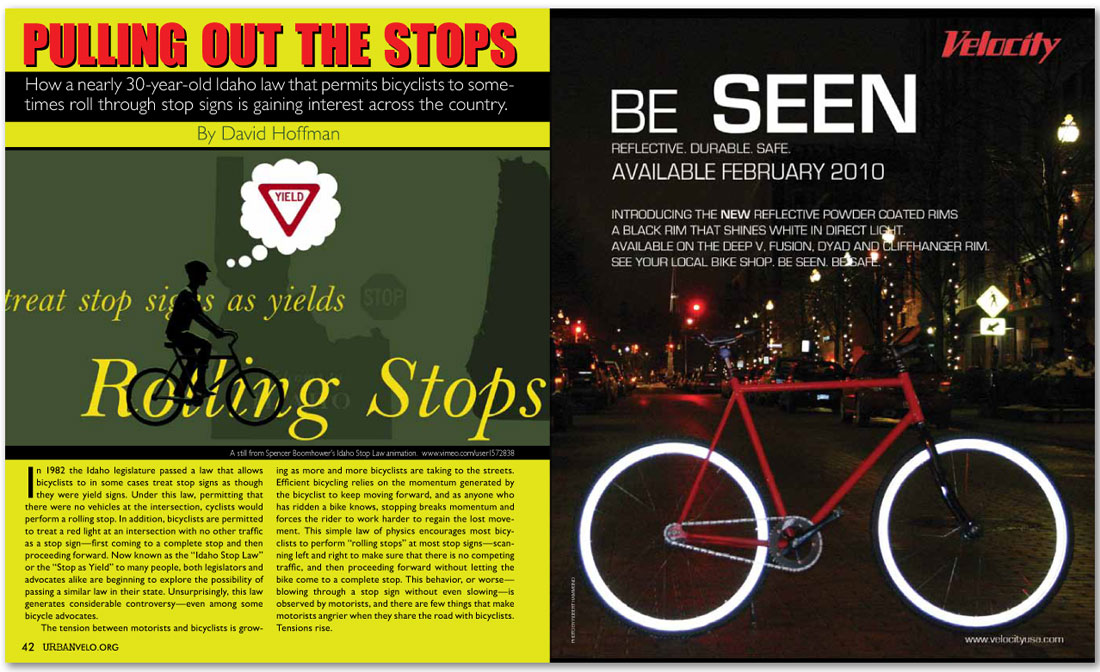


Pulling Out The Stops
How a nearly 30-year-old Idaho law that permits bicyclists to sometimes roll through stop signs is gaining interest across the country.
By David Hoffman
In 1982 the Idaho legislature passed a law that allows bicyclists to in some cases treat stop signs as though they were yield signs. Under this law, permitting that there were no vehicles at the intersection, cyclists would perform a rolling stop. In addition, bicyclists are permitted to treat a red light at an intersection with no other traffic as a stop sign—first coming to a complete stop and then proceeding forward. Now known as the “Idaho Stop Law” or the “Stop as Yield” to many people, both legislators and advocates alike are beginning to explore the possibility of passing a similar law in their state. Unsurprisingly, this law generates considerable controversy—even among some bicycle advocates.
The tension between motorists and bicyclists is growing as more and more bicyclists are taking to the streets. Efficient bicycling relies on the momentum generated by the bicyclist to keep moving forward, and as anyone who has ridden a bike knows, stopping breaks momentum and forces the rider to work harder to regain the lost movement. This simple law of physics encourages most bicyclists to perform “rolling stops” at most stop signs—scanning left and right to make sure that there is no competing traffic, and then proceeding forward without letting the bike come to a complete stop. This behavior, or worse—blowing through a stop sign without even slowing—is observed by motorists, and there are few things that make motorists angrier when they share the road with bicyclists. Tensions rise.